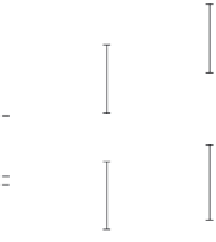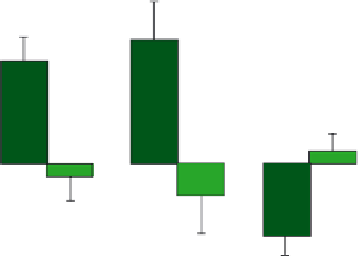what-when-how
In Depth Tutorials and Information
(A)
Spine BMD (g/cm2)
(B)
30
Strength*
Tr ab*
Phi*
8
20
6.0
-
6
4.6
-
10
4
2.1
0
2
1.0
0
0.5
-10
0.0
Treatment
-2
Placebo
0
6
12
Time on study (months)
18
-20
Figure: Compare percent change in strength, Tr ab and Phi 18 months from
baseline in subjects with treatment or Placebo.
Treatment
Placebo
*P <0.05 between groups
**P <0.001 between groups
*P <0.05 between groups
**P <0.001 between groups
FIGURE 55.3
(A) Response to treatment with teriparatide: BMD values for spine L1-L4, in 77 adults with OI mean age 41 years (18-75
range). OI type I = 51; OI type III = 14; OI type IV = 12. Compared to placebo, teriparatide treatment improved lumbar spine BMD. (B) QCT
studies including finite element analysis of bone.
48
Teriparatide improved calculated bone strength measurement by finite element analysis,
and improved trabecular bone mass by QCT. Treatment decreased the calculated phi measurement which represents a positive effect on bone
strength. This figure is reproduced in color in the color plate section.
(From Orwoll, E. et al. Teriparatide improves BMD and bone strength in adults
with osteogenesis imperfecta: a randomized, blinded, placebo controlled trial. Amer J Bone Mineral Res 2012;27:Suppl 1.)
downregulates osteoblastic bone formation via the Wnt
pathway; receptors for the protein sclerostin on the
osteoblast exert a negative effect on bone formation.
45
This function was revealed by loss-of-function muta-
tions in the SOST gene in Van Buchem disease which is
characterized by osteosclerosis, and SOST mutations in
otherwise healthy individuals found to have increased
bone mass secondary to decreased sclerostin forma-
tion.
49,50
Clinical trials are in progress testing the effect
of anti-sclerostin antibodies (Scl-Ab) as anabolic agents
in individuals with osteoporosis. Anti-sclerostin anti-
bodies have been studied in animal models of OI. As
reported by Sinder et al., two weeks of Scl-Ab success-
fully stimulated osteoblast bone formation in Brtl/+
and WT mice, leading to improved bone mass and
reduced long-bone fragility. Image-guided nanoinden-
tation revealed no alteration in local tissue mineral-
ization dynamics with Scl-Ab.
51
Additional reports of
Scl-Ab studies in OI mouse models are published in
abstract form (2012 Annual Meeting of the American
Society for Bone and Mineral Research, Minneapolis).
The therapeutic effect of anti-sclerostin Ab in adults
with OI is currently under study (F. Glorieux, personal
communication).
[10]
References
[11]
















